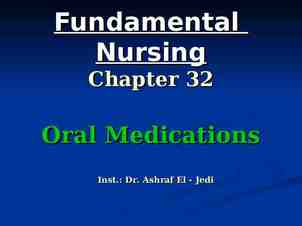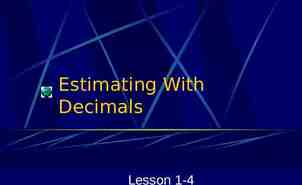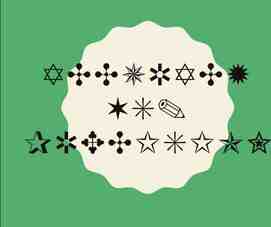Using a Fire Extinguisher Bureau of Workers’ Compensation PA Training
22 Slides2.10 MB
Using a Fire Extinguisher Bureau of Workers’ Compensation PA Training for Health & Safety (PATHS) PPT-013-01 1
Fire Extinguishers Not all fire extinguishers are the same. Use the proper class of fire extinguisher only on fires it was designed to extinguish. Know where fire extinguishers are located & what class they are. Number 1 thing safety; only attempt to extinguish small fires! Never put a used fire extinguisher back in place-have it PPT-013-01 recharged. 2
General Requirements Fire extinguishers must be easily accessible at all times! Must not be obstructed by boxes, chairs, or other miscellaneous items. Should not be placed on the ground. Should be mounted in such a way they can’t easily fall and injure someone. PPT-013-01 3
Do You See a Problem? Access to Fire Extinguisher Obstructed PPT-013-01 4
Any Problems Here? Access to extinguisher obstructed Nothing should be placed in front, around, or next to a fire extinguisher PPT-013-01 5
Marking Extinguisher Locations Fire extinguisher locator signs should be placed so extinguishers are easy to find during an emergency. PPT-013-01 6
Fire Extinguisher Labels All fire extinguishers should have a label to indicate what class of fire they will extinguish. Most extinguishers use an international picture label. Become familiar with fire extinguisher labels before you need to use an extinguisher. PPT-013-01 7
Fire Triangle/Tetrahedron Oxygen most basic Fire extinguishers work by either cooling down heat, taking O2 level below that necessary to support combustion, or interrupting chemical reaction. 14-16% necessary to support combustion 21% in atmosphere Fire Triangle Oxygen, heat, and fuel Fire Tetrahedron Add chemical reaction Remove any of these items No fire (fire goes out) Basic fire prevention Separate fuel & ignition sources PPT-013-01 8
Classes of Fire Class “A” Fires Ordinary combustibles (e.g. wood, paper, cloth, or plastic). Class “B” Fires Flammable/combustible gases and liquids (e.g. gasoline, kerosene, and methane). PPT-013-01 9
Classes of Fire Class “C” Fires Energized electrical (e.g. power going to the device). Class “D” Fires Combustible metals (e.g. titanium, zirconium, and magnesium). PPT-013-01 10
Classes of Fire Class “K” Fires Cooking grease made from animal fat. These fires usually burn very hot. Dangerous to extinguish. Special fire extinguishers used for these classes of fires. Usually in kitchen areas of restaurants/cafeterias. PPT-013-01 11
Types of Fire Extinguishers Water Fire Extinguishers Usually silver in color. Hose attached somewhere at/near the top. Can be used on Class “A” fires only. Carbon Dioxide (CO2) - Usually colored red. - No pressure gauges. - “Horn” instead of a hose or nozzle. - Can be used on Class “B” & “C” fires only. PPT-013-01 12
Types of Fire Extinguishers Dry Chemical Fire Extinguishers o Can be red, yellow, white, or other colors. o Extinguishers containing sodium bicarbonate (baking soda) or potassium bicarbonate can be used on Class “B” and “C” fires only. o Those containing monoammonium phosphate can be used to extinguish Class “A”, “B”, and “C” fires. PPT-013-01 BC ABC 13
Types of Fire Extinguishers Class “D” Fire Extinguishers o Contain special material (e.g. graphite). o Use only on fires involving combustible metals (e.g. titanium, zirconium, etc.). PPT-013-01 14
Types of Fire Extinguishers Halon Fire Extinguishers “Halogenated hydrocarbons.” (similar to Freon) Primarily used to extinguish fires in sophisticated electrical/computer equipment (Class “C” fires). “Wet Chemical” Fire Extinguishers Primarily used to extinguish Class “K” fires (cooking grease made with animal fats). PPT-013-01 15
Up Close & Personal Pull Pin Anti-tamper seal Pressure Gauge Hose Horn PPT-013-01 16
Pressure Gauge Needle on pressure gauge should be in “operable range.” Any problems here? Extinguisher needs recharging PPT-013-01 17
To Use a Fire Extinguisher Remember the word P.A.S.S. P Pull the pin on the fire extinguisher handle. A Aim the nozzle/horn of the extinguisher at the base/bottom of the fire. S Squeeze the handles together to make the extinguisher work. S Sweep the extinguisher from side to side as if using a broom. PPT-013-01 18
After Using a Fire Extinguisher Never put the used extinguisher back up on the wall (even if used for only five seconds)! A fire extinguisher that’s been used may not operate again due to the pressure inside leaking out. Notify the appropriate individual/department so the used extinguisher can be replaced and recharged as quickly as possible. PPT-013-01 19
Conclusion Fire extinguishers are everywhere within buildings, work places, hotels, and hopefully YOUR HOME! Being comfortable using extinguishers involves being familiar with them. Make sure you know where the closest fire extinguisher is, what type it is, and what class of fire it can be used to extinguish. Remember, being able to use a fire extinguisher correctly could save your life or the lives of others! PPT-013-01 20
Contact Information Health & Safety Training Specialists 1171 South Cameron Street, Room 324 Harrisburg, PA 17104-2501 (717) 772-1635 [email protected] Like us on Facebook! https://www.facebook.com/BWCPATHS PPT-013-01 21
Questions PPT-013-01 22



























